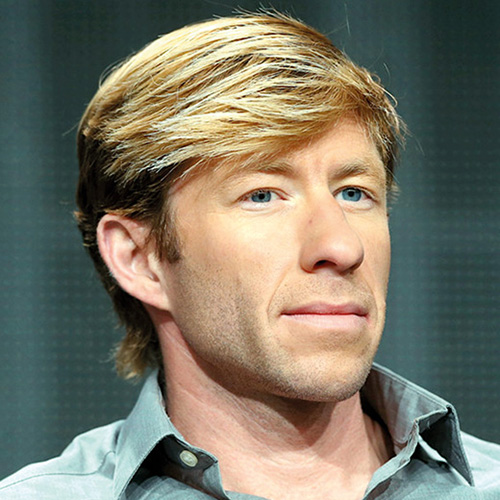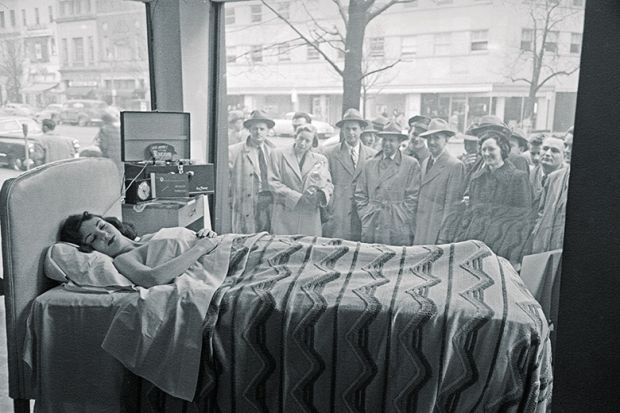“O sleep, why dost thou leave me?” sings the eponymous heroine of Handel’s 1744 opera Semele. The wistfulness of one of his most beautiful melodies will resonate with anyone who has suffered prolonged loss of sleep. For those lucky enough never to have been so afflicted, sleep is perhaps just another bodily function. Matthew Walker, professor of neuroscience and psychology at the University of California, Berkeley, offers a perspective on sleep that will be new to most people but is of enormous importance for society and for its individual members.
Walker is a Liverpudlian who made his way to California by way of Nottingham and Harvard universities. His research career has paralleled the increasing availability and capability of magnetic resonance imaging, a technology for which Paul Lauterbur and Sir Peter Mansfield shared the Nobel Prize in Physiology or Medicine in 2003. MRI provides pictures of brain activity that with intensive development have become increasingly well resolved in space and time. It is a workhorse both for diagnosis and research and Walker provides many examples of how it is revolutionising sleep research.
There are two important strands to this readable and sometimes witty book. The first, an authoritative account of what is known about sleep, is interesting but might seem a little esoteric. However, it shows how sleep benefits us all in many ways, quite a few of which are unexpected. It also forms an essential introduction for Walker’s second main theme: how the sleep patterns that we have allowed modernity to impose on us damage our wellbeing in myriad ways.
Sleep has been around for more than 500 million years and all animal species that have been tested sleep. Fish, which need constant awareness of their swimming environment, can keep one half of their brain awake while the other half sleeps. In 1952, Eugene Aserinsky and Nathaniel Kleitman of the University of Chicago recognised that there are two distinct sleep states. In one, our eyes move constantly below our eyelids, and this “rapid eye movement” or REM sleep is of enormous importance. It is differentiated from non-REM (or NREM) sleep, during which our eyes remain at rest. Walker claims, with much supporting evidence, that REM sleep is what stands between rationality and insanity. At some time, we all experience deeply disturbing events. If we cannot come to terms with them, they threaten serious disruption to our lives. REM sleep takes the edge off such trauma and allows us to achieve some acceptance of it to move forward. It truly “knits up the ravell’d sleeve of care”.
REM sleep is also a driving force for creativity. We are all familiar with a problem that appears insoluble at bedtime, and yet where the solution pops up on waking, as if by magic. Most languages apparently have a phrase equivalent to “sleep on it”. REM sleep shakes up our brains, allowing us to make connections that our more prosaic conscious minds might never recognise. But Walker makes a much bigger claim. When our predecessor Homo erectus came down from the trees she was able to sleep safely for longer, and therefore have much more REM sleep. Over evolutionary time this bonanza of extra sleep has fuelled the creativity revolution that defines Homo sapiens, leading ultimately to such things as Shakespeare, air travel, modern medicine and Lady Gaga. REM sleep also makes us better able to tolerate the quirks of our fellow humans.
This is not really the book for anyone troubled by loss of sleep. The late Conservative Party politician Julian Critchley suggested that MPs wanting a successful career should limit their vices to “a bag of boiled sweets” and this is probably sound counsel for anyone wanting to ensure a good night’s sleep. Walker’s list of things that can interfere with sleep includes caffeine in all its forms, alcohol, excessive evening eating, all sleeping pills, some prescription and other drugs, technology in the bedroom, late-night email checking and late exercise. Bedtime sex is not mentioned, although for some it would perhaps be banned as involving excessive exertion. Positive advice, which will be familiar to most people who have suffered extended loss of sleep, is to ensure good sleep hygiene. “Twelve tips for healthy sleep” are quoted from a website but relegated to an appendix. Cognitive behavioural therapy is suggested for the most difficult cases.
For me, the most important part of Walker’s book relates to the damage that contemporary patterns of sleep do to all or most of us, whether young, middle-aged or old. Damage is caused by not sleeping for long enough, but also by the adoption of patterns of living that interfere with our inbuilt daily clock or “circadian rhythm”. This is a particular problem for “night owls”, who comprise about 30 per cent of the population. But we all need to recalibrate both how much we sleep and when we sleep.
The types of damage that we can suffer are many and various. Adult short sleepers are more likely to develop dementia; notable exemplars are Ronald Reagan and Margaret Thatcher (Donald Trump is another who seems to need little sleep). There are possible links between insufficient sleep and attention deficit hyperactivity disorder and autism in children. Lack of sufficient REM sleep promotes the recurrent nightmares that are often experienced by sufferers from posttraumatic stress disorder; in collaboration with a clinical colleague, Walker has developed a treatment for this. Inadequate sleep is a contributing cause of so many illnesses that Walker describes it as a form of self-euthanasia.
The effect of loss of sleep and disruption to our body clocks also damages the economy, through inefficient working and loss of creativity. A 2016 report from the Rand Corporation, an independent thinktank, puts the loss to the UK economy, caused by people sleeping for less than seven hours a night, at 1.9 per cent of GDP or about £40 billion. For Japan, the figure is a massive 2.9 per cent of GDP. There can always be debate about such figures, but they certainly give pause for thought.
In his last chapter Walker asks what can be done, and frames his answer at five levels: societal; public policy and governmental; organisational; educational and interpersonal; and individual. The answers that he offers are worthy in themselves. They include using emergent technology to tailor our bedroom environment to our circadian temperature and light sensitivity, and adjusting the timing of the school day better to match pupils’ natural clocks. He commends a US insurance company that offers bonuses to staff who meet their sleep targets and proposes that the World Health Organisation develops a teaching module on the importance of sleep. However, in a society in which no one is educated about the benefits of adequate sleep and where many working practices actively discourage good sleep hygiene, these practical suggestions seem to me to be dwarfed by the scale of the task. What is needed is that most challenging of outcomes, culture change. So I urge you all to read this book. If, like me, you are convinced by the importance of the problem/opportunity, tell your head of department, tell your vice-chancellor and tell your MP. “Better sleep for better living” is our slogan.
Richard Joyner is emeritus professor of chemistry at Nottingham Trent University.
Why We Sleep: The New Science of Sleep and Dreams
By Matthew Walker
Allen Lane, 368pp, £20.00
ISBN 9780241269060
Published 3 October 2017

The author
Matthew Walker, professor of neuroscience and psychology (and director of the Sleep and Neuroimaging Laboratory) at the University of California, Berkeley, spent his early life in Liverpool and Chester. At the age of 7, he says, he “performed [his] first scientific experiment on Christmas Eve. I tried to falsify the existence of Santa Claus. The research design involved string tied to my toe, connected to a propped-up chair. Without shaming myself further, I’ll simply say that the experiment was a complete failure.”
When studying neuroscience at the University of Nottingham, Walker was based at the Queen’s Medical Centre, which he describes as “an incredible hub of outstanding basic scientists as well as leading clinical doctors”. This has led him ever since to focus his research on “the end goal of addressing diseases and disorders. The hope is to alleviate some of the suffering these conditions inflict – suffering that you see day in, day out, if you train in a hospital setting.”
Studying sleep, Walker points out, is highly unusual in that he gets to “spend two-thirds of [his] waking life trying to understand what I do (and where I go) during the remaining one-third of night-time life. Subjective insights abound!” Yet for a deeper understanding of sleep, rigorous multidisciplinary approaches are “not simply important, but utterly necessary. The impact of sleep and sleep loss is truly expansive. From the harmful effects of insufficient sleep on the DNA nucleic alphabet within your cells, all the way up to the detrimental impact of sleep loss on education, business productivity, transportation and the sound practice of medicine – there is no facet of biology or society that remains untouched…Our societal state of sleep deprivation is perhaps the greatest curable disease that scientists have yet to combat, in part because public-health campaigns are woefully lacking.”
Matthew Reisz
POSTSCRIPT:
Print headline: Refresh button for weary souls
Register to continue
Why register?
- Registration is free and only takes a moment
- Once registered, you can read 3 articles a month
- Sign up for our newsletter
Subscribe
Or subscribe for unlimited access to:
- Unlimited access to news, views, insights & reviews
- Digital editions
- Digital access to THE’s university and college rankings analysis
Already registered or a current subscriber?




